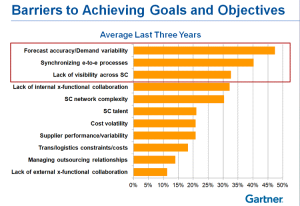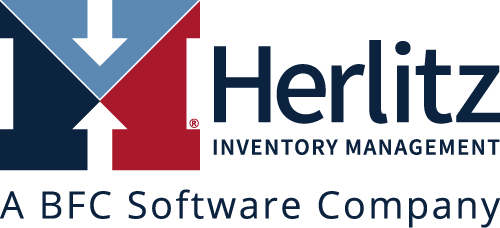Sitting at the intersection of supply and demand and delivering great customer service without inadvertently allowing inventory to swell is not a simple task. It is really only in the last decade, with the changes in the marketplace, that the direct link between supply chain management and corporate cash flow has been widely understood and received a high level of interest. With structural changes in the economy, web sales, SKU proliferation, and other factors occurring, how can you achieve supply chain management excellence and provide higher sales, lower inventory and an improved gross margin?
How can you more effectively utilize precious capital and better service your customers?
The 2013 Gartner-SC Digest Supply Chain Study had companies identified the priorities they have for their supply chain strategy and the benefits they hope to derive from their strategy. Here are the top 3 supply chain priorities that the companies indentified:
- Use the Supply Chain to drive Business Growth
- Improve Customer Service
- Reduce Costs
Gartner also asked the companies to identify the significant barriers preventing them from succeeding. Here’s a list the top barriers, from highest to lowest, mentioned by more than 10% percent of the study participants (click on gif to expand).

The top 3 of these barriers: Forecasting Accuracy/Demand Variability, the Inability to Synchronize End-to-End activities, and a Lack of Supply Chain Visibility are unfortunately mentioned by more than a third of the companies. The Gartner analysts commented that these top 3 are tightly linked together; using the term “joined at the hip.” That statement seems pretty insightful to me.
So how can companies expect to improve their supply chain execution, improving service and lowering their costs when they face these kind of barriers? Adding in the fact that many companies adapting to the marketplace, are creating online and a multiple retail presence, making execution more complex, and requiring different and more varied skills. They are making it even more challenging to efficiently manage their supply chains.
Unless you find the right set of tools for your team your strategy cannot succeed. Finding solutions that give your organization the ability to optimize costs and service, forecasting and executing new items and promotions, and sharing key information across your organization and with your trading partners, will enable you to improve supply performance and help you achieve your goals. Our experience in improving shareholder value by impacting supply chain performance, collaboration, and analysis can provide the missing links.
Improvements in demand forecasting, inventory replenishment and analytics that create higher visibility translate into better decision making and outcomes; lowering supply chain costs end-to-end, increasing revenue and profits.
Companies using customer value driven supply chain strategies need the ability to make smarter operational decisions in order to generate margin dollars and allow their strategy to succeed. At the end of the day, it’s all about keeping your customer happy and loyal through anticipating their needs and consistently delivering the experience they expect.

